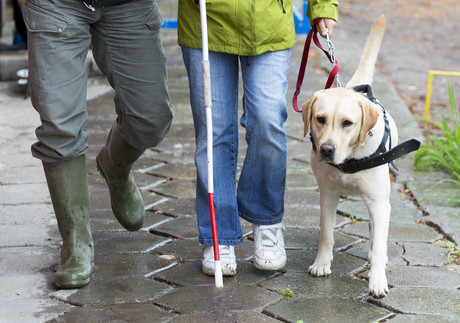Vision impaired guided by beacon and GPS technology

Public places will be more accessible to people with impaired vision, with the launch of a program that uses beacon and GPS technology.
Guide Dogs Victoria will run the program in partnership with Public Transport Victoria (PTV) and City of Melbourne for a period of eight months.
Beacons will be set up in multiple locations at Melbourne’s Southern Cross Station, where they will connect to a GPS app on a user’s smartphone to provide them with directional advice.
The technology, launched as part of International White Cane Day, is expected to improve the independence of those with low vision or blindness by making built-up areas, events and experiences more accessible. The beacons also update in real time, allowing users to keep up to date with any changes to existing surroundings, such as escalator outages.
Dogs Victoria CEO Karen Hayes said the pilot will determine whether the technology could be implemented elsewhere.
“The beacon technology is another fantastic step towards improving the independence of people with vision loss and to reduce their reliance on the support of others,” she said.
“We’re excited to see how the pilot will positively affect the commuters that are white cane or guide dog users and we look forward to expanding the technology across Victoria soon.”
PTV CEO Jeroen Weimar said that the approach to improving accessibility on the public transport network went beyond just physical barriers.
“This trial demonstrates the kind of innovative thinking we need to look beyond physical boundaries to accessibility so we can make a difference to the entire journey for passengers with vision loss,” he said.
“It’s pleasing to see the work Guide Dogs Victoria are doing to champion better mobility for people with vision loss, and our partnership provides us valuable insight into how we can make every journey easier.”
It is hoped that more organisations will collaborate in order to improve accessibility for those with impaired vision.
“It’s important that we’re working as a community to make public spaces, events and experiences more accessible to people with vision loss,” said Hayes.
Lord Mayor Robert Doyle said the beacon technology will improve the Melbourne experience for many people who experience vision loss.
“The City of Melbourne is committed to making the world’s most livable city accessible for everyone. We do this through considered urban design, wayfinding and innovative navigation tools like the beacon technology,” he said.
“International White Cane Day is the perfect time to reflect on the great work that Guide Dogs Victoria does to improve access for people with vision loss to move around the city safely and independently.”
Funded by the NDIS and through a number of philanthropists, the beacon pilot is also expected to be trialled across Victoria including schools, Melbourne Zoo and The Formula 1 Rolex Australian Grand Prix in the coming months.
5G: Foundation for connected mobility
5G is the driving force behind safe and connected mobility, transforming the future of vehicles...
Interview: Jason MacBride, Neat
In our annual Leaders in Technology series, we ask the experts what the year ahead holds. Today...
Interview: John Hopping, Ericsson
For our annual Leaders in Technology series we are discussing system complexity and customer...



